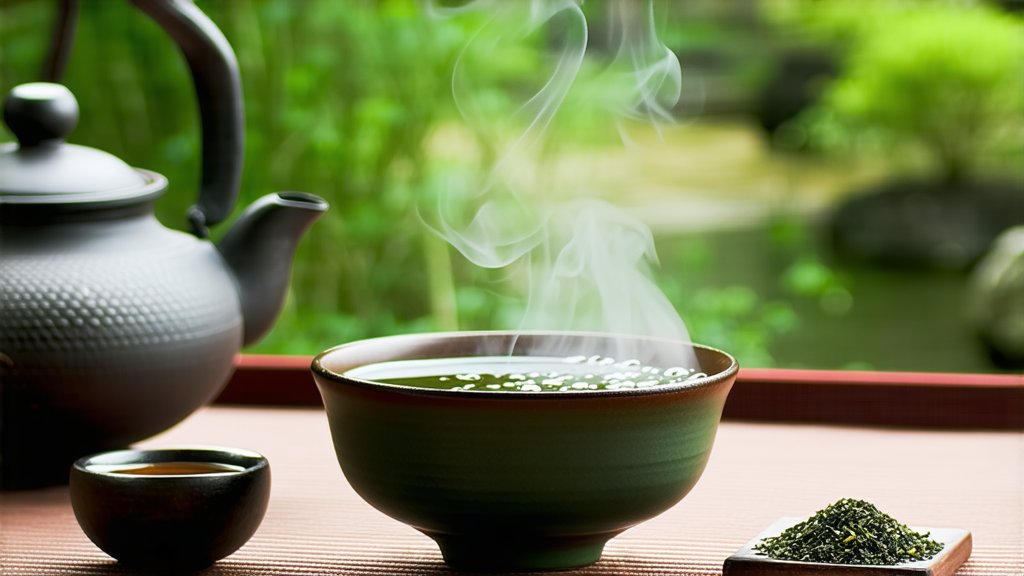
In the lush landscapes of Fujian Province, China, nestled between towering mountains and mist-laden valleys, lies the birthplace of one of the world's most revered teas—Tieguanyin. This exquisite oolong tea has captivated tea enthusiasts globally with its unique flavor profile, aromatic complexity, and rich cultural heritage. As we embark on this journey through the annals of Tieguanyin, we will explore its storied past, delve into its distinct varieties, unravel the meticulous craft behind its production, and guide you through the intricate art of its appreciation.
A Historical Odyssey
The origins of Tieguanyin can be traced back to the early 18th century during the Qing Dynasty. Legend has it that the tea was discovered by a poor scholar named Wei Yin in Anxi County, who found solace and inspiration in the tranquility of nature. One fateful night, he dreamt of a golden dragon dancing amidst a sea of tea plants, which upon awakening, led him to discover a single tea bush bearing leaves of extraordinary quality. He propagated these leaves and thus began the legacy of Tieguanyin, named after his secluded hermitage, "Tie Luohan Guan" (Iron Buddha Temple), where the first bushes were cultivated.
Over centuries, Tieguanyin evolved from a local delicacy to an internationally acclaimed tea, symbolizing not just a beverage but a philosophy of harmony and balance. Its name, translating to "Iron Goddess of Mercy," reflects the reverence and care with which each leaf is treated throughout its journey from plant to cup.
Varieties and Flavor Profiles
Tieguanyin encompasses several sub-varieties, each offering a distinct interpretation of its signature characteristics. The primary types include Xiangxing (Fragrant Type), Dancui (Single Cultivar), and Rouxian (Fleshy Fragrance). Among them, Xiangxian stands out for its high floral aroma and sweet aftertaste, while Dancui showcases a more robust flavor with hints of fruitiness and creaminess. Rouxian, on the other hand, strikes a harmonious balance between fragrance and taste, often described as having a 'meaty' texture and a long-lasting finish.
These variations arise due to differences in cultivation practices, terroir, and processing techniques, highlighting the diversity within this single tea category. Understanding these nuances adds depth to the appreciation of Tieguanyin, making every brewing experience a new adventure.
The Craft of Creation
The artistry of Tieguanyin begins in the orchards of Anxi, where the tea bushes are nurtured with meticulous attention to detail. The optimal conditions—cool climate, high humidity, and nutrient-rich soil—foster the development of complex flavors and aromas. Harvesting occurs multiple times a year, with spring and autumn yielding the finest qualities due to milder temperatures and slower growth rates.
Post-harvest, the leaves undergo a series of intricate steps that define oolong tea production:
- Withering: Freshly picked leaves are spread thinly on bamboo mats under shade, allowing them to lose moisture and become pliable.
- Bruising: Leaves are gently tossed or rolled to bruise edges, facilitating partial oxidation and releasing natural enzymes.
- Fixation: Through rapid heating (pan-frying or steaming), enzyme activity halts, preserving the leaves' green color and locking in their unique flavors.
- Rolling & Shaping: Leaves are shaped into tight pellets or twisted ropes, enhancing extraction during brewing.
- Oxidation: Controlled exposure to air allows limited oxidation, striking a delicate balance between green and black tea characteristics.
- Roasting: Final roasting further refines flavors and removes any remaining moisture, ensuring stability for storage.
- Sorting & Grading: Leaves are sorted by size and quality before packaging.
This labor-intensive process demands precision and expertise passed down through generations, ensuring that every batch of Tieguanyin embodies the essence of its heritage.
The Art of Appreciation: Gongfu Tea Ceremony
To truly savor Tieguanyin is to engage in the ancient practice of the Gongfu tea ceremony, a ritualistic approach that emphasizes mindfulness and respect for the tea. Here’s a brief guide to experiencing Tieguanyin in its full glory:
- Preparation: Gather essential tools—a Yixing clay teapot or porcelain gaiwan, a fairness cup, small tasting cups, and a tea tray. Warm all vessels with hot water to cleanse and prepare them for infusion.
- Measurement: Use approximately 5 grams of Tieguanyin per 100ml of water. Place the leaves in the teapot or gaiwan.
- First Infusion: Brew with water heated to around 95°C (203°F) for 15-30 seconds. This initial rinse awakens the leaves and discards impurities.
- Subsequent Infusions: Gradually increase steeping time for each subsequent brew (e.g., 30 seconds for the second infusion, then adding 10-15 seconds per round). High-quality Tieguanyin can be steeped up to 7-10 times without losing flavor.
- Pouring & Sipping: Decant the brewed tea into the fairness cup to evenly distribute flavors, then pour into individual tasting cups. Savor slowly, noting the evolving aromas and flavors with each sip.
- Appreciation: Observe the tea’s color, clarity, and body. Notice how the fragrance transitions from floral to fruity to woody notes over multiple infusions. Pay attention to the tea’s texture and the subtle changes in aftertaste.
The Gongfu ceremony transforms tea drinking into a meditative experience, fostering a deep connection between the drinker, the tea, and the moment itself.
In conclusion, Tieguanyin is more than just a tea; it is a testament to China's rich cultural tapestry and the profound artistry involved in tea cultivation and preparation. From its mythical origins to its modern-day global appeal, Tieguanyin invites us to slow down appreciate the finer things in life and find peace in every steaming cup. Whether you're a seasoned tea connoisseur or a curious newcomer, embarking on your tea journey, exploring Tieguanyin promises a voyage of sensory delight and spiritual enrichment.